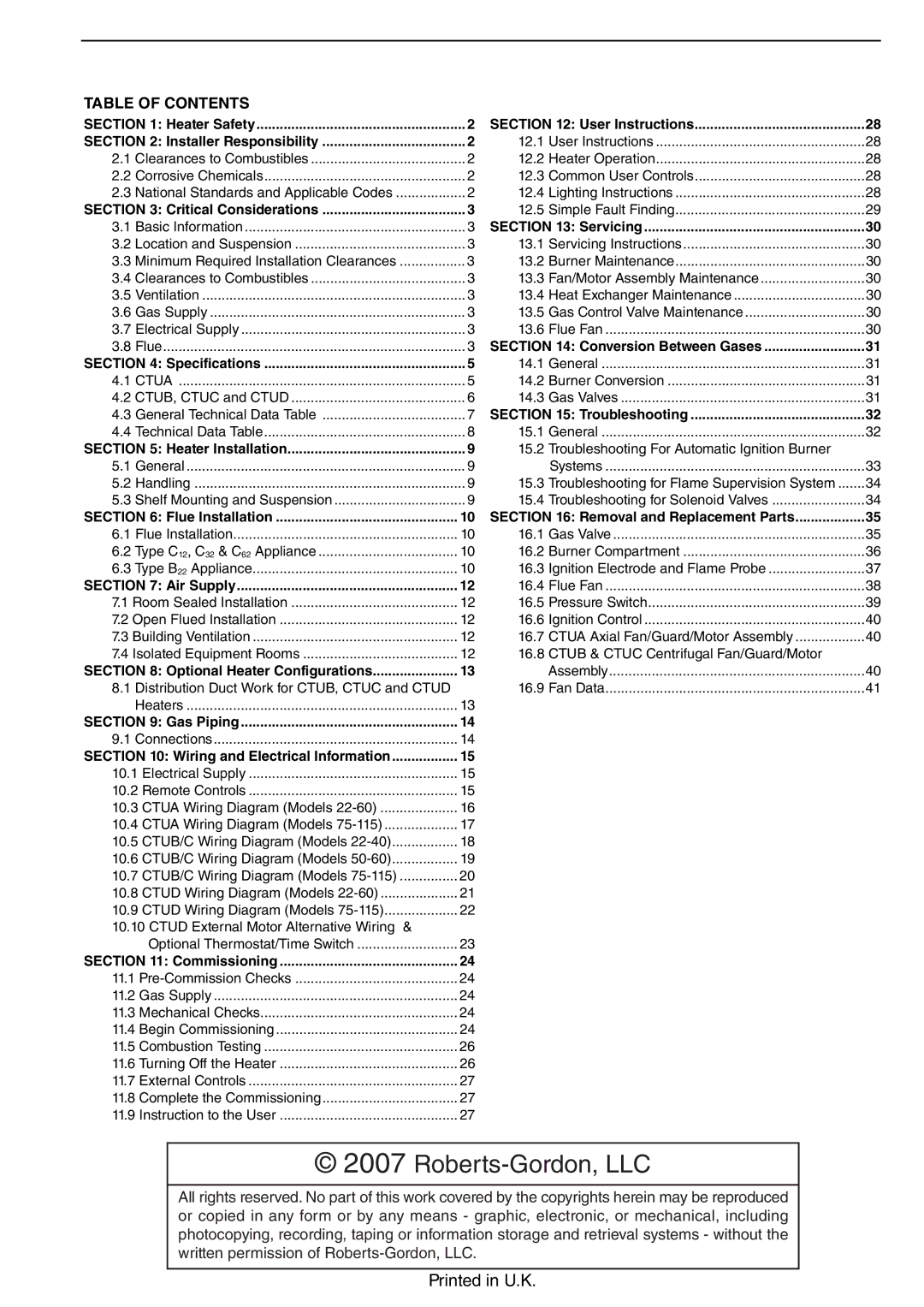CTU 22 TO 115 specifications
The Roberts Gordon CTU 22 TO 115 is a renowned unit heater designed to deliver efficient heating solutions in commercial and industrial settings. Known for its advanced features and robust design, this unit heater is ideal for applications where warmth and comfort are essential, such as warehouses, manufacturing facilities, and large retail spaces.One of the main features of the CTU 22 TO 115 is its powerful heating capacity. With a range of output capabilities, it can effectively heat large areas, ensuring that employees and equipment remain comfortable during cold weather. The heater's output is adjustable, allowing for tailored heating solutions based on specific operational needs.
This model integrates several innovative technologies to enhance efficiency and performance. The use of advanced combustion technology ensures optimal fuel efficiency, which translates to lower energy costs and reduced environmental impact. The heater is available in both gas and oil configurations, providing versatility to accommodate different fuel sources depending on availability and preference.
In addition to its energy efficiency, the Roberts Gordon CTU features a compact design, making it suitable for installations in tight spaces. Its lightweight construction allows for easy installation and relocation, ensuring that businesses can quickly adapt to changing layout requirements. The unit is equipped with high-quality materials and a durable finish, contributing to its longevity and low maintenance needs.
Safety is a paramount concern in any heating system, and the CTU 22 TO 115 doesn't disappoint. It comes with various safety features, including over-temperature protection, ensuring that it operates securely under all conditions. With automatic shutoff capabilities, the heater provides peace of mind to operators, allowing for unattended operation in more remote settings.
Moreover, the CTU’s quiet operation is a significant advantage, as it minimizes disruption in the workplace, ensuring a comfortable environment for personnel. Its design also facilitates easy access to components for maintenance, thus ensuring that the unit remains operational with minimal downtime.
Overall, the Roberts Gordon CTU 22 TO 115 combines performance, efficiency, and safety features to create a reliable heating solution for diverse industrial applications. Its adaptability to various fuel types and efficient design makes it a popular choice among facility managers looking for dependable heating solutions.

